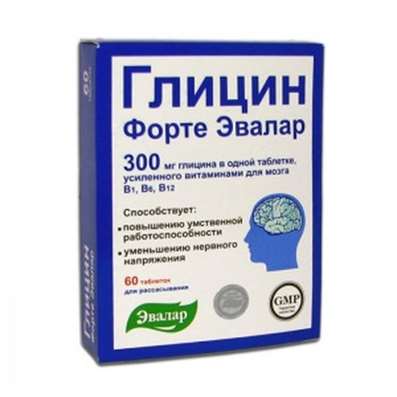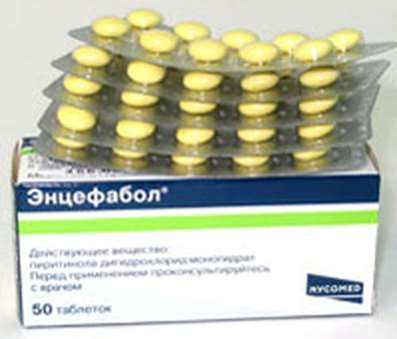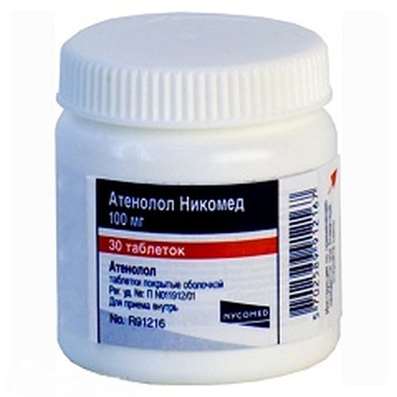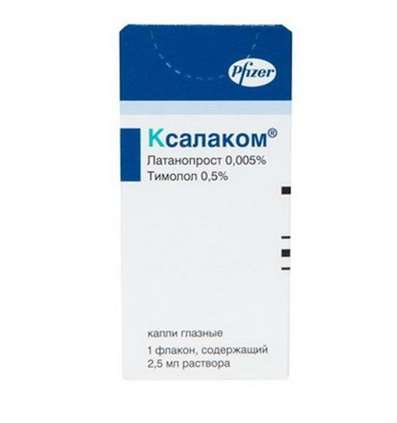Instruction for use: Pimecrolimus (Pimecrolimusum)
I want this, give me price
Pharmacological group
dermotropic means
Nosological classification (ICD-10)
L20 Atopic dermatitis
Itchy atopic eczema, Common neurodermatitis, Allergic skin diseases, Allergic skin diseases of non-infectious etiology, Allergic skin diseases of non-microbial etiology, Allergic skin diseases, Allergic skin lesions, Allergic manifestations on the skin, Allergic dermatitis, Allergic diathesis, Allergic itching dermatosis, Allergic Skin Disease, Allergic skin irritation, Dermatitis allergic, Atopic dermatitis, Dermatosis allergic, Diathesis exudative, Skin Allergic Disease, Skin allergic reaction to medicinal and chemical preparations, Skin reaction to medication, Skin and allergic disease, Acute eczema, Chronic atopic dermatitis, Exudative diathesis, Itching allergic dermatosis
CAS 137071-32-0
Characteristics of Pimecrolimus
Derivative of macromolactam ascomycin. White or almost white crystalline powder. Soluble in methanol and ethanol, insoluble in water.
Pharmacology
Pharmacological action - immunosuppressive, anti-inflammatory local, dermatotropic.
Pimecrolimus specifically binds to the cytosolic receptor with macrophylline-12 T-lymphocytes and inhibits calcium-dependent phosphatase-calcineurin. As a result, it suppresses activation of T-lymphocytes, blocking the transcription of early cytokines. In particular, in nanomolar concentrations inhibits the synthesis of pro-inflammatory cytokines-interleukin-2 and interferon-gamma (Th1-type), as well as interleukin-4 and interleukin-10 (Th2-type) in human T cells. Pimecrolimus prevents the release of proinflammatory cytokines, as well as mediators of inflammation from mast cells in vitro in response to antigen / IgE stimulation. Pimecrolimus does not affect keratinocytes, fibroblasts and endothelial cells.
Pharmacokinetics
In the treatment of adult patients with atopic dermatitis (with a lesion of 13-62% of the body surface) for a period of up to 1 year, the recorded concentrations of pimecrolimus in the blood were at or below the sensitivity of the method of quantitation (less than 0.5 ng / ml). In patients with a detectable level of substance in the blood, it was below 2 ng / ml, with no accumulation of the substance over time. Due to the low systemic absorption of pimecrolimus in its local application, no pharmacokinetic parameters such as AUC, Cmax, T1 / 2, etc. have been determined. In vitro studies have shown that binding to plasma proteins is 74-87%.
After a single dose of radioactive labeling, numerous circulating O-demethylated metabolites were detected, with approximately 81% of radioactivity being found predominantly in faeces (78.4%) as metabolites, less than 1% of radioactivity was determined in feces unchanged. In vitro studies using human liver microsomes have shown that pimecrolimus is metabolized with the participation of the CYP3A enzyme subfamily. In vivo experiments on the skin of mini-pigs (minipig - a breed of pigs for laboratory studies) or in vitro on the skin of people biotransformation of the substance in the skin was not detected.
Systemic exposure to pimecrolimus in the form of 1% cream was studied in 26 children aged 2-14 years with atopic dermatitis (with a lesion of 20-69% of the body surface). After the application of the cream twice a day for 3 weeks, the pimecrolimus concentration in the blood was low (less than 3 ng / ml), and in most samples it did not reach the detection limit (0.5 ng / ml). In 20 children out of 23 observed and only 13 of the 25 adults observed during the 3-week period had at least one blood sample with a detectable concentration. Due to the low and variable level of pimecrolimus in the blood, it was not possible to establish a correlation between the extent of the lesion, the amount of cream applied and the concentration of the substance in the blood. In general, the measured plasma concentrations in adults and children with atopic dermatitis were comparable.
In another group, 22 children aged 3-23 months with atopic dermatitis (with a lesion of 10-92% of the body surface) had a high proportion of blood samples with detectable concentrations ranging from 0.1 ng / ml (detection limit) to 2.6 ng / ml, which may be a result of the greater body surface / body weight ratio in this age group.
Clinical researches
Evaluation of the efficacy of pimecrolimus (in the form of 1% cream) in the treatment of atopic dermatitis was carried out in a number of studies.
Three Phase 3 pediatric studies (1114 patients aged 2-17 years) included two 6-week, randomized controlled trials (blind phase) with a 20-week open phase and one controlled long-term study (up to 1 year) with alternative use of external corticosteroids. Of these patients, 542 (49%) were aged 2-6 years. In short-term studies, 11% of patients who applied the cream did not complete the study, of which 1.5% - due to the development of adverse reactions; in a one-year study - 32% and 3%, respectively. Most patients from the uncompleted studies were excluded due to ineffective therapy.
The most frequent local complication, noted during short-term studies in children 2-17 years of age, was burning at the site of application of cream - in 10% of patients who used the cream (in the control group 13%); in a long-term study - 9% and 7%, respectively. The most common side effect observed in short-term studies was headache - 14% (in the control group - 9%), in a one-year study - nasopharyngitis 26% (21%), influenza 13% (4%), pharyngitis 8% (3 %), viral infection 7% (1%), fever 13% (5%), cough 16% (11%), headache 25% (16%). Of the 843 patients aged 2-17 years who applied the cream, 9 patients (0.8%) developed herpetic eczema (in 5 who used only cream and 4 patients had cream and corticosteroids). In 211 children of the control group, there were no cases of herpetic eczema. Most adverse events were mild or moderate.
Two identical 6-week, randomized, controlled multicenter Phase 3 trials included 403 patients aged 2-17 years with mild to moderate atopic dermatitis. Male / female gender ratio was approximately 50%, 29% of patients were African American. At the beginning of the study, 59% of patients had moderate disease with an average body surface lesion score of 26%. About 75% had atopic dermatitis with a lesion of the face and / or neck area. Patients of the main group (267 children) used 1% cream containing pimecrolimus, control group patients (136 children) - the basis of the cream, both external agents were applied to the entire affected area (5% to 96%) twice a day for 6 weeks.
At the end of the study (6 weeks later), according to the IGI (Investigators Global Assessment), there were no signs of disease or were practically absent in 35% of the patients who applied the cream, compared to 18% of the control group. More patients of the main group (57%) had complete or almost complete disappearance of the itching compared with the control group (34%). The disappearance of itching was accompanied by an improvement in the condition of patients with atopic dermatitis.
In 2 independent studies in children with the use of a cream for the treatment of atopic dermatitis of mild and moderate severity, a significant effect in the treatment was observed by the 15th day of therapy. Of the main symptoms of atopic dermatitis (erythema, infiltration / papule formation, lichenification, excoriation) by the 8th day of therapy, such manifestations as erythema, infiltration / formation of papules decreased (in comparison with the control).
In a 6-week, randomized, controlled trial with a 20-week open phase in children aged 3-23 months, 11% of children who used the cream and 48% of the control group children (who used the cream base) did not complete this study; The cause of exclusion was not the occurrence of side effects. In this 6-week study, the children who used the cream experienced a higher incidence of some side effects than the control group: fever 32% (in the control group 13%), upper respiratory tract infection 24% (14%), nasopharyngitis 15% (8%), gastroenteritis 7% (3%), otitis media 4% (0%) and diarrhea 8% (0%). In the open phase of the study, the incidence of the side-effects listed above was comparable to control.
In a 6-month study of the safety of cream in children aged 3-23 months, 16% of the children who used the cream and 35% of the children in the control group were excluded from the study, and, in connection with the development of side effects, 1.5% (in the control group 0%). On the background of cream therapy, the incidence of such adverse effects as fever 30% (in the control group 20%), upper respiratory tract infection 21% (17%), cough 15% (9%), hypersensitivity 8% (2%), teething 27% (22%), vomiting 9% (4%), rhinitis 13% (9%), viral skin damage 4% (0%), rhinorrhea 4% (0%) and stridor 4 % (0%).
The effect of pimecrolimus (in the form of a cream) on the development of the immune system in children is unknown.
The efficacy and safety of pimecrolimus in patients 65 years of age or older is not established due to inadequate number of observations (only 9 patients of this age group were included in the Phase 3 study).
Carcinogenicity, mutagenicity, effects on fertility
A study of the carcinogenicity of pimecrolimus in mice when ingested (feeding through a gastric probe inserted through the nose) revealed a statistically significant increase in the incidence of lymphoma in males and females with high doses (compared with the administration of the base of the cream alone), with a dose of about 45 mg / kg / day (258-340 MPDR on the basis of AUC comparison). There was no evidence of tumor on the background of taking pimecrolimus at doses of about 15 mg / kg / day (60-133 MPDH based on the AUC comparison).
In rats with oral administration, a statistically significant increase in the incidence of benign thymoma in males and females was detected with doses of 10 mg / kg / day (in comparison with the administration of the base of the cream alone). In another similar study, data were obtained on the occurrence of thymoma in male rats with doses of 5 mg / kg / day (compared to the control - the introduction of a cream base). There was no evidence of the appearance of tumors with pimecrolimus in male rats treated with 1 mg / kg / day (1.1 MPDC on the basis of AUC comparison) and in females treated with 5 mg / kg / day (21 MPDC based on AUC comparison).
In a 52-week study of photocarcinogenicity, the average time to start skin tumor formation in hairless mice after a permanent local exposure to UV irradiation (40 weeks of treatment and 12 weeks of follow-up) was less with the use of a cream base. Additional effects on tumor formation with the addition of the active ingredient, pimecrolimus, to the cream base, were not noted.
No mutagenic or clastogenic activity of pimecrolimus was detected in in vitro tests, including Ames test, mouse lymphoma cell test (L5178Y), chromosome aberration test on Chinese hamster cells (V79), and in vivo in micronucleus test in mice.
In the study of the effect of pimecrolimus (ingestion) on fertility and embryo-fetal development in rats, there were violations of periodicity of estrus, postimplantation death of fetuses, quantitative decrease in litters at doses of 45 mg / kg / day (38 MPHC based on AUC comparison). Influences on fertility in female rats at doses of 10 mg / kg / day (12 MPDC on the basis of AUC comparison) were not observed. Influences on fertility in male rats at doses of 45 mg / kg / day (23 MPDC on the basis of AUC comparison) were also not observed.
Application of Pimecrolimus
According to the Physicians Desk Reference (2005), pimecrolimus in the form of 1% cream is indicated for short-term and intermittent long-term treatment of mild to moderate atopic dermatitis in patients with normal immune status at the age of 2 years and older, in whom the use of alternative conventional therapy is considered undesirable for potential risk, or in the treatment of patients resistant to conventional therapy.
Contraindications
Hypersensitivity.
pregnancy and lactation
In studies of embryo-fetal development in animals with the dermal application of pimecrolimus in the form of 1% cream, no toxic effect on the female and fetus organism was observed when applied at doses of 10 mg / kg / day in rats (0.14 MPDT, calculated as surface area of the body), 10 mg / kg / day in rabbits (0.65 MPHP based on the AUC comparison). The cream was applied for 6 hours a day during organogenesis (6-21th day of pregnancy in rats and 6-20th day of pregnancy in rabbits).
When pimecrolimus is administered orally (2 weeks before mating and during 16 days of gestation in rats or 6-18 days in rabbits) at doses up to 45 mg / kg / day (38 MPDC on the basis of AUC comparison) to rats and 20 mg / kg / day (3.9 MPHC based on AUC comparison) rabbits did not show any toxicity to female rats, but embryo-fetal toxicity was noted (postimplantation death of fetuses and quantitative decrease in rat litter, with no developmental defects in the fetuses.) Rabbits did not show toxic effects substances on the body of females, embryos ksichnosti and teratogenicity.
The study of peri- and postnatal development in rats with pimecrolimus administered from the 6th day of pregnancy to 21 days of lactation showed that only 2 of 22 females gave birth to live offspring when taking the highest doses of 40 mg / kg / day. At doses of 10 mg / kg / day (12 MPDC on the basis of AUC comparison), there was no effect on postnatal survival and development of F1 generation, subsequent maturation and fertility.
In studies of embryo-fetal development in rats and rabbits, it is shown that when pimecrolimus is administered inward, it passes through the placenta.
The action category for fetus by FDA is C.
When pregnancy is possible only if necessary (adequate and strictly controlled studies of safety of use in pregnant women have not been conducted, the experience of use during pregnancy is limited and does not allow assessing the safety of use).
Breastfeeding women should stop either breastfeeding or the use of a cream (studies on the isolation of the drug with breast milk after topical application have not been conducted, it is not known whether pimecrolimus enters breast milk).
Side effects
In studies on the safety of pimecrolimus in the form of 1% cream, no cases of contact sensitization, phototoxicity, photoallergy, or cumulative inflammatory reaction have been reported.
In a long (1 year) study of a cream with alternative use of external corticosteroids in patients aged 2-17 years, 43% of patients who used the cream needed corticosteroids (compared with 68% in the control group). Corticosteroids were used for more than 7 days in 34% of the patients in the main group and in 54% of the control group. In patients who used the cream and external corticosteroids in the study, side effects such as impetigo, skin infections, superinfection (infectious atopic dermatitis), rhinitis, urticaria appeared more often (in comparison with patients using only the cream).
In 3 randomized, double-blind, controlled pediatric studies (843 patients in the main group) and one controlled study in adults (328 patients in the main group), cream therapy was discontinued due to side effects of 48 patients (4%) out of a total of 1171 patient compared with 13 patients (3%) of 408 patients in the control group. The reasons for stopping therapy were mainly reactions at the site of application and skin infections. The most frequent local reaction observed during the study was burning at the site of application of the cream (in 8-26% of patients).
Interaction
Possible interactions with other drugs (including immunization) have not been systematically studied. Due to the very low level of pimecrolimus in the blood with its topical application, systemic effects of interaction are unlikely, but not excluded. The concomitant use of inhibitors of the CYP3A enzyme subfamily, such as erythromycin, itraconazole, ketoconazole, fluconazole, calcium channel blockers, cimetidine, etc., should be carried out with caution.
Overdose
Cases of overdose with the use of cream, as well as accidental ingestion was not noted.
Routes of administration
Outwardly.
Precautions for Pimecrolimus
It is not recommended to use the cream in children under 2 years old.
Do not apply the cream to areas affected by acute viral infection. Since the evaluation of the efficacy and safety of the cream in the treatment of infectious atopic dermatitis has not been carried out, it is necessary to treat a skin infection or to assess the risk and the intended benefit from its use prior to its use.
Patients with atopic dermatitis have a predisposition to skin infections, and ongoing treatment may increase the risk of infection with varicella zoster viruses (varicella zoster or herpes simplex) and herpes simplex, or the emergence of Keposi's herpetiform eczema.
Local reactions (burning at the application site) that occur in the first few days of cream application (usually disappear for no more than 5 days) have an easy or moderate degree of severity and decrease as the condition improves.
In clinical trials using the cream, 14 cases of lymphadenopathy (0.9%), mostly associated with infections and antibiotic-susceptible, were reported, most of which either had a clear etiology or a tendency toward normalization. With the development of lymphadenopathy during the period of application of the cream, it is necessary to establish the cause; in the absence of a clear etiology of lymphadenopathy or in the presence of acute infectious mononucleosis, the use of the cream should be stopped, and patients should be monitored before the normalization of the condition.
In clinical trials, 15 cases (1%) of skin papilloma development were noted in patients using the cream (the youngest of the patients was 2 years old, the oldest was 12 years old). In cases of aggravation of the process of papilloma formation of the skin, or with resistance to standard therapy, it is necessary to stop using the cream until the warts are completely eliminated.
Despite the lack of phototoxicity when applying the cream, patients should avoid exposure to direct sunlight and UV irradiation during treatment. in studies of carcinogenicity in animals, a decrease in the time of onset of formation of skin tumors under the influence of UV irradiation was observed on the background of the application of the cream.
Data on the use of cream in patients with immune deficiency are absent.
It is necessary to avoid getting the cream in the eyes.

 Cart
Cart





